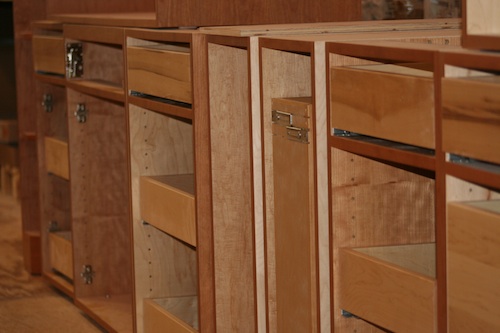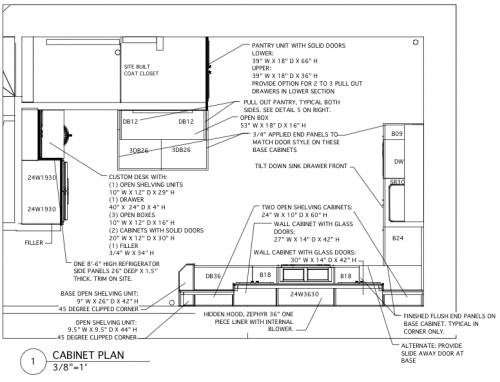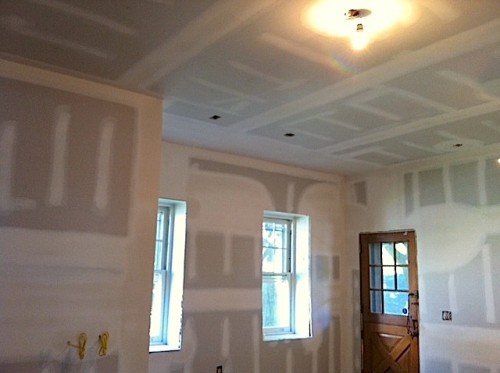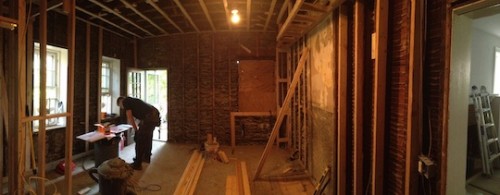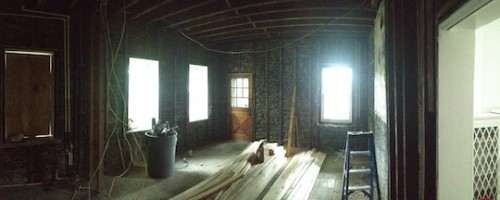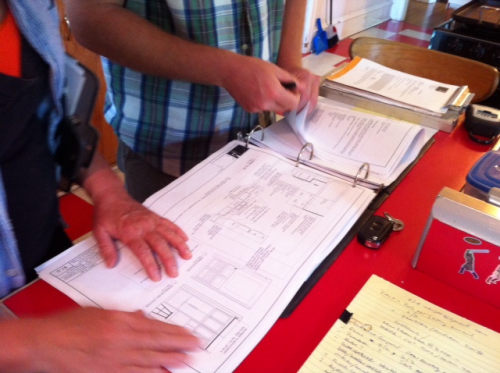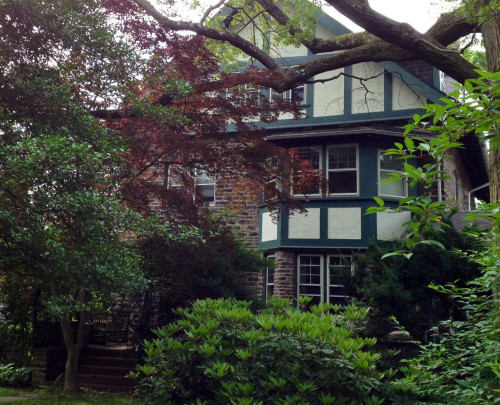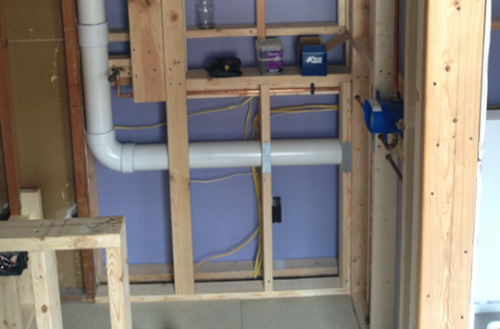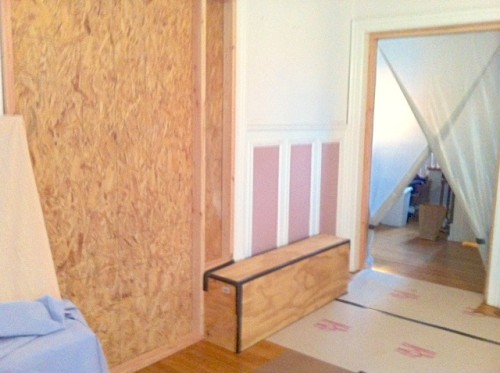
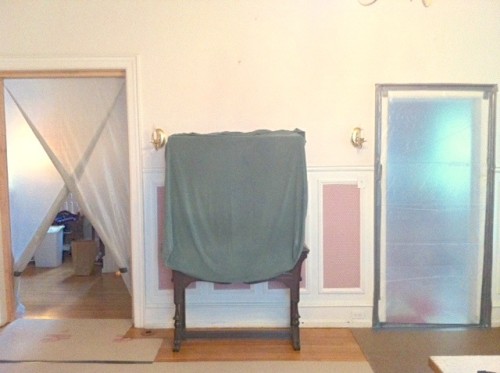
As you can see, we are now well into the demolition phase of our project house in Mt. Airy. This is when all of the “old stuff” in the room is removed, and we get prepped for construction.
These images show the plastic and plywood barriers our crew has installed to help protect the rest of the house from the inevitable dust and debris that results from demolition. Because the house was built in the 1920s, the EPAs RRP/Lead Safe Remodeling Rules apply here, as they do to any house built before 1978. The plastic is 4 mm+, and we use plenty of duct tape to seal all around the doorway and the floor. All of the other doorways and A/C outlets in the kitchen will also be taped up and covered with plastic, as well. This is because all the plaster and the trim on the walls and ceiling are coming down today, and the many layers of flooring will be lifted to reveal the pine subflooring underneath. Some of those vinyl floor tiles and the floor glue can contain hazards like asbestos, so it’s important to err on the side of safety in this way.
The plywood box with black tape in the bottom image is a temporary “duct” our crew built for the A/C intake vent in the floor there. The temporary ducting is now taking in air from the clean living room and directing it into the home’s forced-air A/C system. Air contaminated with demolition dust containing lead will be scrubbed from the air inside the isolated kitchen by an air-scrubbing unit the demolition pros use. (We will show what one looks like in next week’s newsletter.)
When the team is finished removing all of the demolition debris, it will be bagged and then taped shut before being put into a dumpster and taken to an approved dumping site. We’ll then vacuum all of the demolished kitchen surfaces — including the floor, walls, and ceiling stud bays — to ensure the dust is completely removed.
The demolition will take 2 days to complete. During this time, our clients out of town are enjoying some peace and quiet.
Be sure to visit our facebook page for regular updates and photos on this project.

